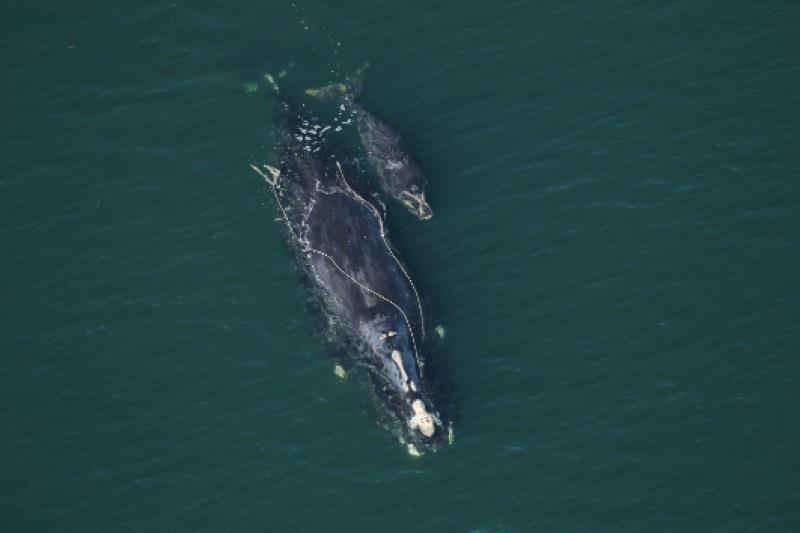
Size matters: Examining the effect of body size on birth rates in North Atlantic right whales
by NOAA Fisheries 9 Jul 2022 17:21 UTC

North Atlantic right whale Catalog #3560 ‘Snow Cone' sighted December 2, 2021 entangled and with a new calf © Florida Fish and Wildlife Conservation Commission taken under NOAA permit 20556.
Today, fewer than 350 North Atlantic right whales remain. Impacts from human activities, such as entanglement from fishing gear and collisions with vessels, are the greatest dangers to these whales.
Climate change is also affecting their habitat and the location and availability of their prey.
Mature North Atlantic right whales today grow around one meter shorter than they did 30-40 years ago. Their stunted growth means female whales produce fewer offspring during their reproductive years, limiting the recovery of this endangered species.
Watch the video below to learn why North Atlantic right whales are smaller and what that means for the outlook of the species.